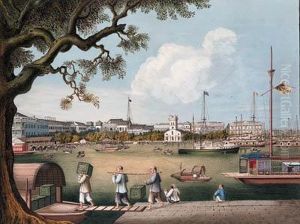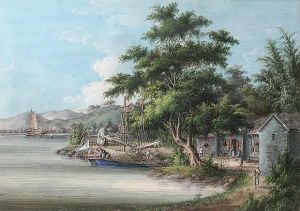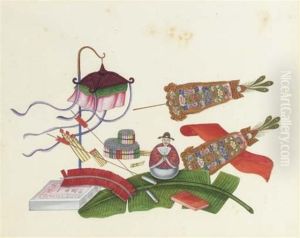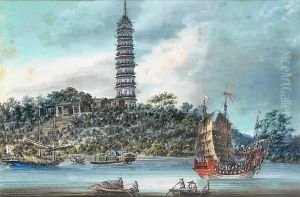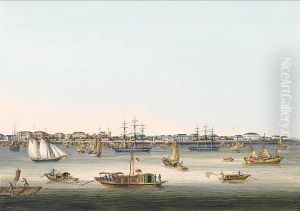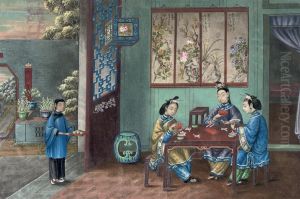Tingqua Guan Lianchang Paintings
Tingqua, also known as Guan Lianchang, was a Chinese artist born around 1809 in the Guangzhou province of China, during the Qing Dynasty. He is best known for his meticulous and vibrant watercolor paintings, particularly those depicting scenes of Cantonese life and the activities related to the China Trade during the 19th century. Tingqua came from a family of artists; his brother, Lamqua, was also a notable painter who received instruction from Western artists.
Tingqua specialized in 'export art,' which was art specifically made for Western consumers. This genre often included subjects such as Chinese landscapes, people, and customs. His studio became one of the most successful in Guangzhou (then known as Canton), and he was particularly adept at capturing the intricate details of Chinese junks, sampans, and commercial activities along the Pearl River.
Despite the popularity of his work among Western traders and merchants, very little is known about Tingqua's life outside of his art. His paintings provide a valuable visual record of the era, as they offer insights into the cultural exchanges between China and the West during a time when China's ports were just opening to foreign trade.
Tingqua's death is recorded as having occurred in 1870. By this time, he had left behind a substantial body of work that would continue to be collected and appreciated for its historical value and artistic merit. His paintings remain a testament to the cross-cultural interactions of the 19th century and are held in various museum collections and prized by collectors of Chinese export art.
